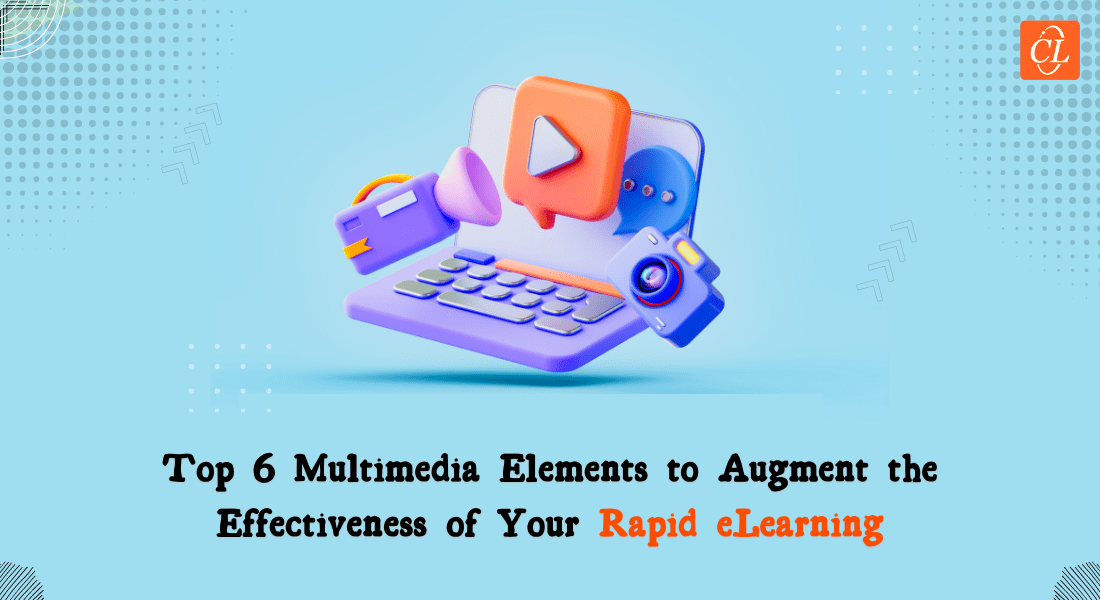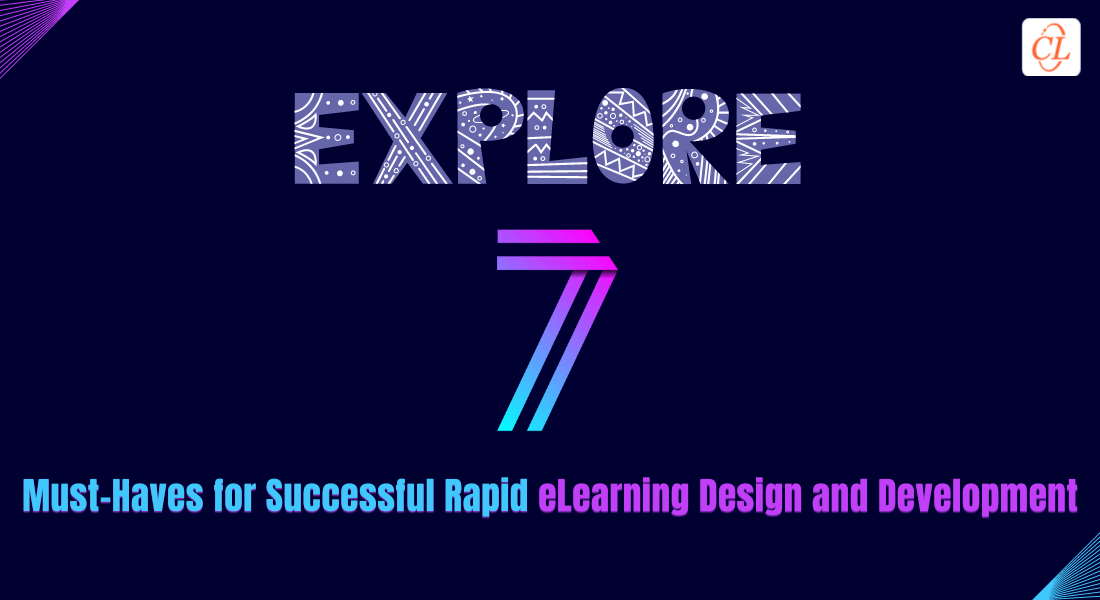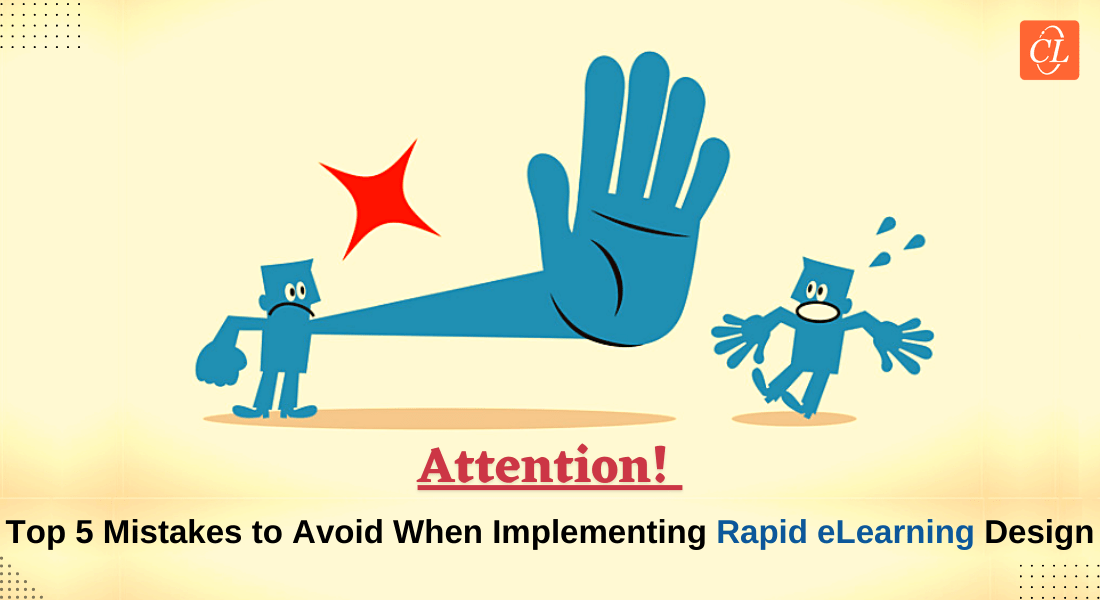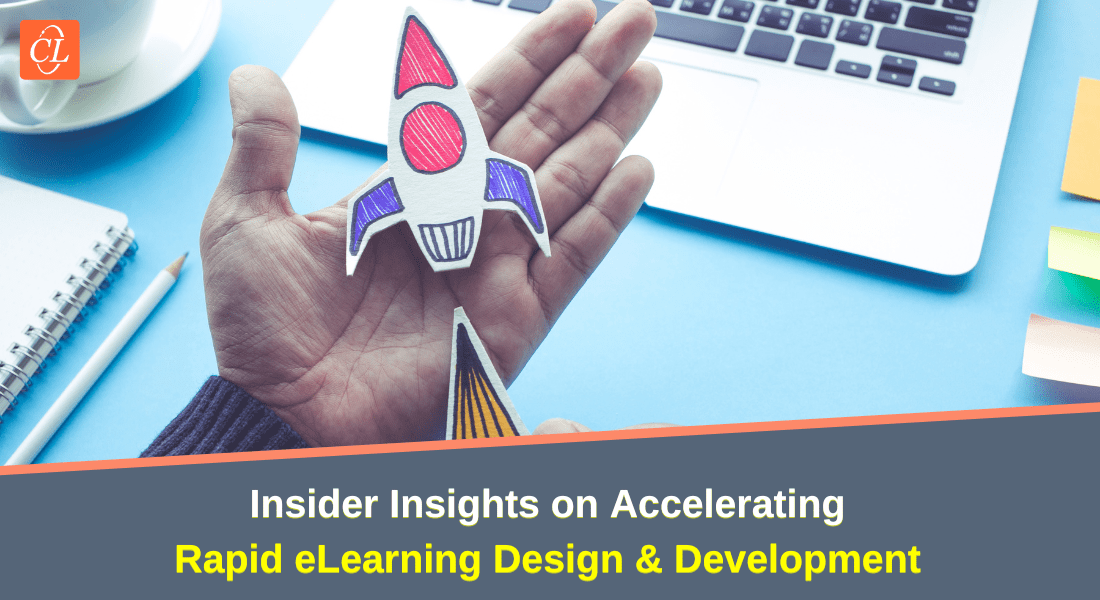6 Multimedia Elements to Enhance Your Rapid eLearning

The waves of rapid eLearning crash onto the shore of corporate training, leaving behind a trail of endless possibilities. Just as a day at the beach can rejuvenate and refresh, rapid eLearning provides a streamlined and efficient way to train and upskill your employees. With its ever-evolving technology and ease of use, it is the perfect solution to create a customized and dynamic learning experience, much like the ever-changing shoreline molding to the rhythm of the tides.
As you venture further into the realm of rapid eLearning, you discover various multimedia elements that make the learning experience all the more engaging and interactive. These multimedia elements are like the seashells and treasures that you find along the beach. They add an extra layer of richness and beauty to the overall experience. The beauty of rapid eLearning is that these multimedia elements can be easily incorporated into the learning process, much like how sea glass and driftwood can be picked up and transformed into unique and meaningful keepsakes.
Rapid eLearning — The Multimedia Way!
Here are the top 6 multimedia elements to augment the effectiveness of your rapid eLearning:
- Videos
- Graphics and images
- Audio
- Animations
- Gamified Components
- Interactive Quizzes
Well, if you’ve collected hundreds of seashells and pearls, I’m sure you won’t be taking all of them home. Right? You’ll certainly pick the ones that add value and sentiment to your lovely abode. Similarly, although there are plenty of multimedia options, you won’t incorporate all of them in your rapid eLearning. So come, let’s take a look at the top 6 multimedia elements that are sure to enhance your rapid eLearning.
6 Multimedia Elements to Enhance Your Rapid eLearning
The use of multimedia definitely augments employee engagement, retention, and application of knowledge, thereby boosting performance and productivity. So let’s explore the top 6 multimedia elements in detail.
Videos
Videos are a valuable tool in rapid eLearning as they enable you to convey complex concepts and ideas in a concise and engaging manner. Whether the type is animated, on-screen presentation or a recorded lecture, the videos should be kept short, focused and to the point to help learners quickly grasp the key message. By using videos in your rapid eLearning, you allow your learners to experience an interactive and visual presentation of the material which helps them to recall and retain the information more effectively. Even better, the learners also feel motivated to continue learning. All these attributes contribute to improved performance and productivity as well as better training ROI.
Learn to evaluate the training ROI in eLearning now!
Graphics and Images
Incorporating high-quality graphics and images into your rapid eLearning can significantly enhance the learning experience. These visual elements make your training content more appealing and help learners to understand complex concepts easily. Flowcharts, diagrams, and illustrations are effective tools for depicting various processes, steps, and stages. On the other hand, infographics are a handy visual tool when you want to present data and information in an engaging and easy-to-understand format.
The use of graphics and images also helps you to break up large blocks of text and makes the content visually more appealing and interesting. This approach enables you to maintain the learner’s attention and even foster their understanding of the eLearning material. So why wait? Integrate graphics and images into your rapid eLearning and provide your learners with a chance to learn and retain information in a more immersive and long-lasting manner.
Audio
Imagine reading, reading, and reading with nothing in between. Yes, probably the white space. But let’s face it. Not everybody is a visual learner. Adding audio to your rapid eLearning is a powerful tool that can help you cater to both audio as well as visual learners and strengthen their learning experience. Audio helps you bring the eLearning courses to life and make them more comprehensive and engaging for learners.
You can also use audio narration that adds a human touch to the content, thereby making it more personal and immersive for learners. Moreover, a clear, apt, and well-delivered audio narration helps reinforce key concepts and ideas, allowing learners to better comprehend and remember the information conveyed. What’s more? Well, using audio in your rapid eLearning facilitates a more effective and enjoyable learning experience for the learners. Harness the power of audio to allow your learners to achieve their learning goals more efficiently.
Animations
Animations play a crucial role in making rapid eLearning more interactive and memorable for learners. Simple animations, such as a moving graph or an animated character explaining a process, keeps the learners more attentive and engaged. With that said, it’s always important to keep animations simple and relevant to the content to avoid overwhelming the learners. Overly complex or irrelevant animations can be distracting and take away from the main message.
Gamified Components
Playing games ain’t always a bad thing! That’s right. Gamification involves the integration of game design elements and mechanics into non-game contexts. It makes the learning experience more engaging and motivating as it attends to the challenge and rewards nature of human beings. Gamified components significantly improve the effectiveness of rapid eLearning courses as they can be presented in form of points, badges, and leaderboards that increase learner engagement and encourage participation and completion.
Gamified elements also enhance the learning process as it provides learners with an opportunity to collaborate and cooperate with each other to finish tasks, which fosters the feeling of team spirit and coordination. Moreover, you can even monitor and track the progress of your employees and accordingly guide them to excel and achieve their learning objectives successfully. In addition, gamification offers a balanced combination of fun and learning, thereby providing an enjoyable, learner-centric experience. This makes it easy for learners to retain and implement the information in a more confident and efficient way.
Interactive Quizzes
Input without relevant outcome is futile. Isn’t it? So analyze how your learners are faring in an interactive and innovative way. Leverage quizzes to assess the knowledge and skills that your learners have acquired. These can take the form of simple multiple choice questions or more complex problem-solving, critical-thinking questions. Therefore, quizzes are an effective method to revise and reinforce the key takeaways from the training session and eLearning course. Based on the results, you can provide the learners with the feedback which helps them gauge their understanding of the concepts and identify areas where they need to focus more attention.
By leveraging quizzes for assessment purpose into rapid eLearning, you can ensure that learners are alert, enthusiastic, and participating to enhance their learning, not simply taking the assessment for qualifying sake. Additionally, interactive quizzes promote sticky learning and help learners beat the forgetting curve.
To Sum It Up!
Incorporating multimedia elements in rapid eLearning is like building a sandcastle on the beach. Just as sandcastles require a variety of materials to be built, so does effective rapid eLearning require a combination of multimedia elements. From animations being the playful seagulls in rapid eLearning to videos acting like gentle sea waves that bring life and vitality to the content, each of these elements adds to the overall quality and effectiveness of the training material, thus the learning experience. So build a comprehensive and engaging learning experience using these amazing multimedia elements, like a beautiful sandcastle on the beach. Don’t forget to check out these amazing, effective instructional design strategies to level-up your corporate training.





